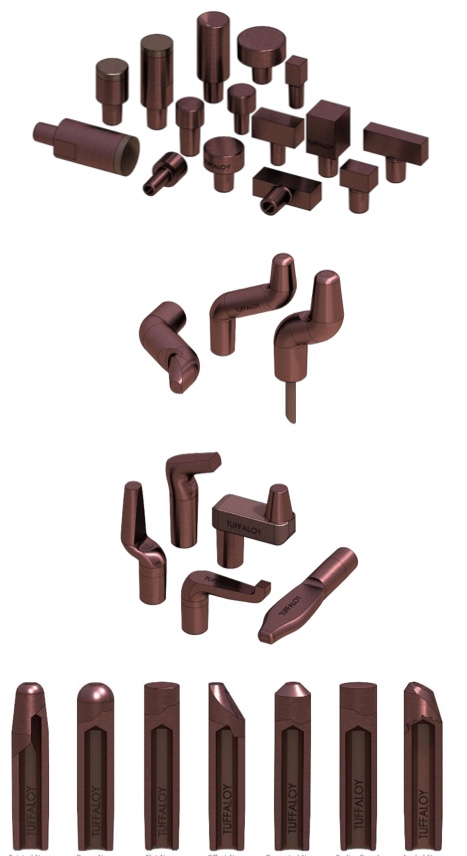Electrode Configurer
Take the Mystery Out of Electrode Shopping
Our technical staff spend a good part of the week on the phone, speaking with customers about electrodes and trying to debunk mysteries behind their selection. This section of the website is to help those new to the electrode selection process.
Use our Configurer now
**Note that the information here is general information and may not pertain to your specific application.
There’s a lot to learn about spot welding before you can select your electrodes. Here are some of the things you need to consider before selecting a part number:
- Electrode shape
- Various electrode shapes are made for all different sorts of unusual applications. There are Pointed nose, Dome nose, Flat nose, Offset, Truncated, Radius, 30-degree offset, Single bend, Double bend, Forged, and more. The most common and ideal electrode is often simply the Pointed nose.
- Electrode face diameter. This usually is related to the Taper. A 4RW typically has a smaller electrode face diameter than a 5RW.
- Face diameter is often related to the size of the weld needed and the thickness of the material being welded.
- Diameter of the electrode and corresponding taper
- Machinists call it a Morse Taper, spot welders call it an RWMA Taper
- The most common tapers on pedestal-style spot welders in North America are RWMA #4 and RWMA #5 tapers (most frequently referred to as 4RW and 5RW, correspondingly
- There are also 6RW and 7RW tapers, for very heavy welding applications, like welding 1/4″ thick plates.
- Copper alloy
- in North America, that usually refers to the “RWMA Class”
- RWMA Class 2 is by far the most common alloy used in resistance welding
- Class 1 and Class 3 are next most common.
- RWMA Class 11 is a much harder alloy, used in high-wear applications.


